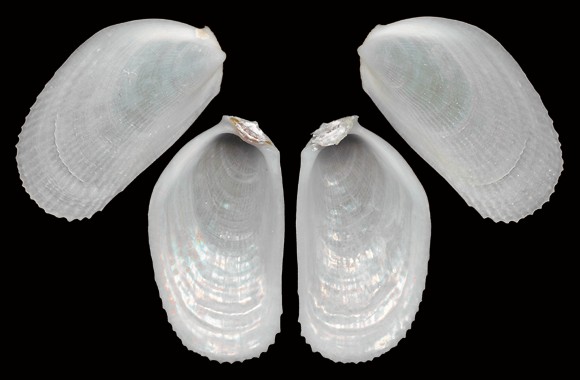
Suspension feeder from subtidal grounds to 100m deep, on rough sand and gravel, under stones, in crevices, in Posidonia meadows (Doris). « May build a nest of debris and byssus threads amongst stones or Laminaria holdfasts often where currents are high » (MBSBI). Original taxon: Ostrea hians.
1m deep, between rocks, Málaga, Andalucia, S. Spain. 17mm.
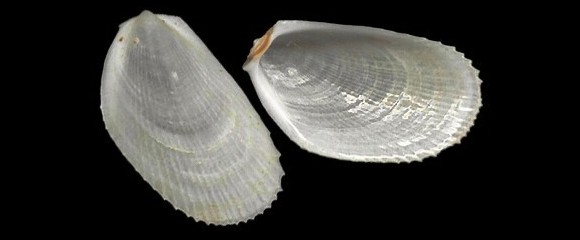
7m deep on sand and gravel, eastern shore of Agia Pelagia bay, Iraklio, N. Crete. 15mm.
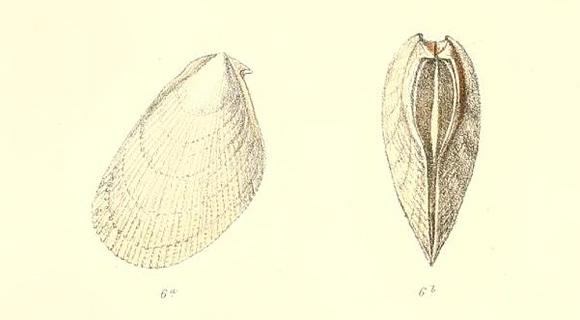
« Shell thin, subcompressed, obliquely ovate, smooth at the sides, striated minutely in the centre, gaping a little posteriorly, widely anteriorly ; anterior hiatus bordered with a strong internal rib ; anterior auricles sharp ; cardinal area small. » – L. A. Reeve: Conchologia Iconica vol.XVIII, London 1873, via BHL.
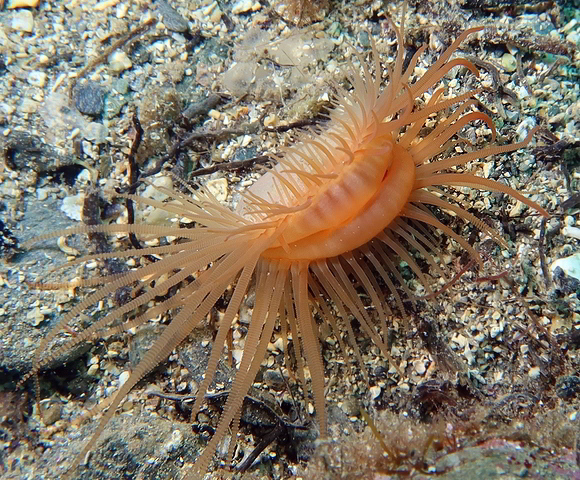
– (CC BY-NC) –
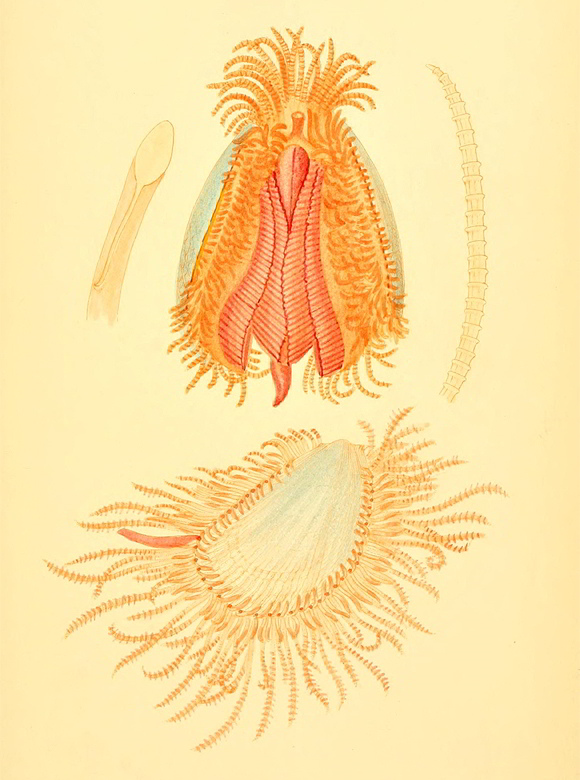
« The colour of the animal is often very beautiful, varying from pale crimson to intense vermilion; the mantle lobes are often tinted with orange. The tentacula are ranged in three distinct series, all towards the inner or attached edges of the mantle lobes; the innermost row (that nearest the shell) is much the shortest, the outermost longest, and all are capable of considerable extension, when the cirrhi appear as if annulated; the largest cirrhi are those above and around the anal region. The branchiae are deep crimson and large. The belly is carinated, and as well as the channeled cylindrical foot, of the same brilliant hue. This species can spin for itself a compact nest of byssal threads entangling small stones, shells and fragments of nullipore; in the midst of it lies the Lima, resting on a smooth inner coating of fibres. As this animal is much more frequently taken free than found thus imbedded, and as it is a very active creature, swimming through the water with great rapidity, it is most likely that this nest-making habit is connected with some peculiarity in its economy at some particular period of its existence. We have never seen any but full-grown specimens contained in these curious nests. » – Forbes & Hanley: op. cit. vol. II, p.270-271.
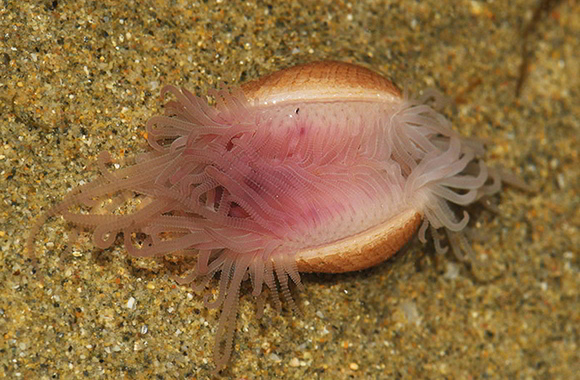
Original picture provided by S. Clanzig (FR).
– (CC BY-NC-SA) –